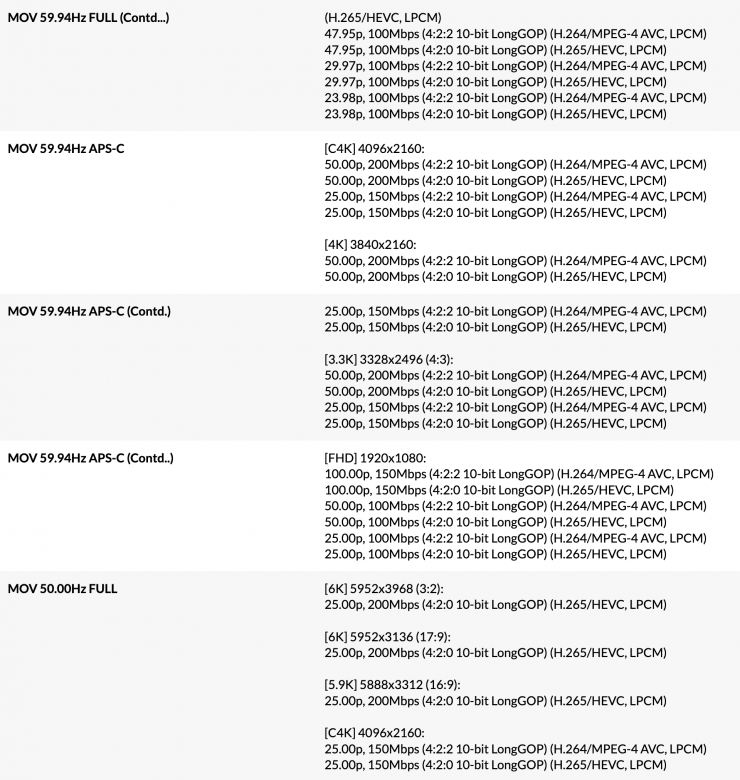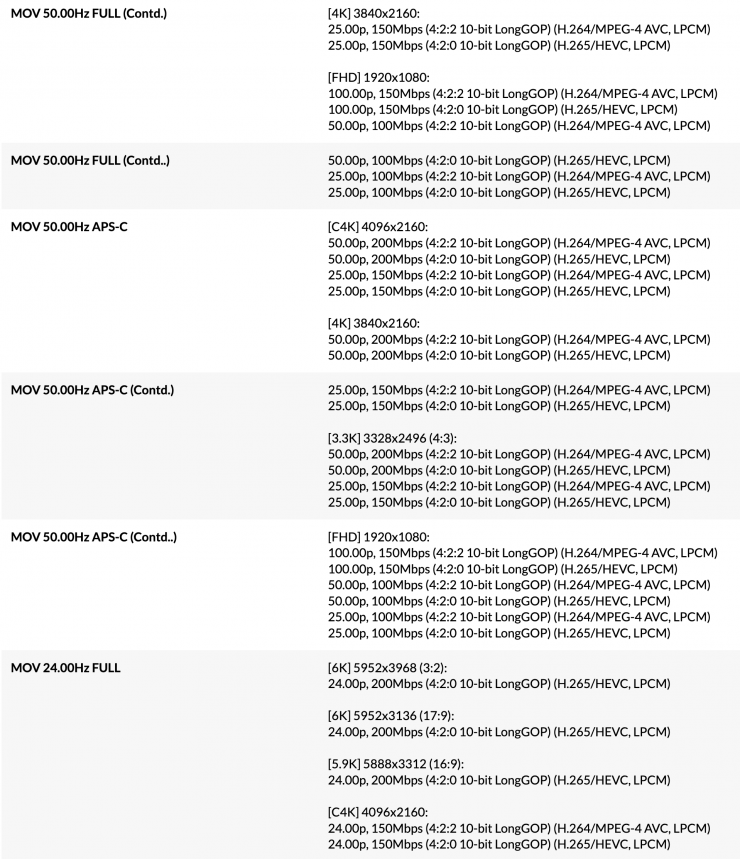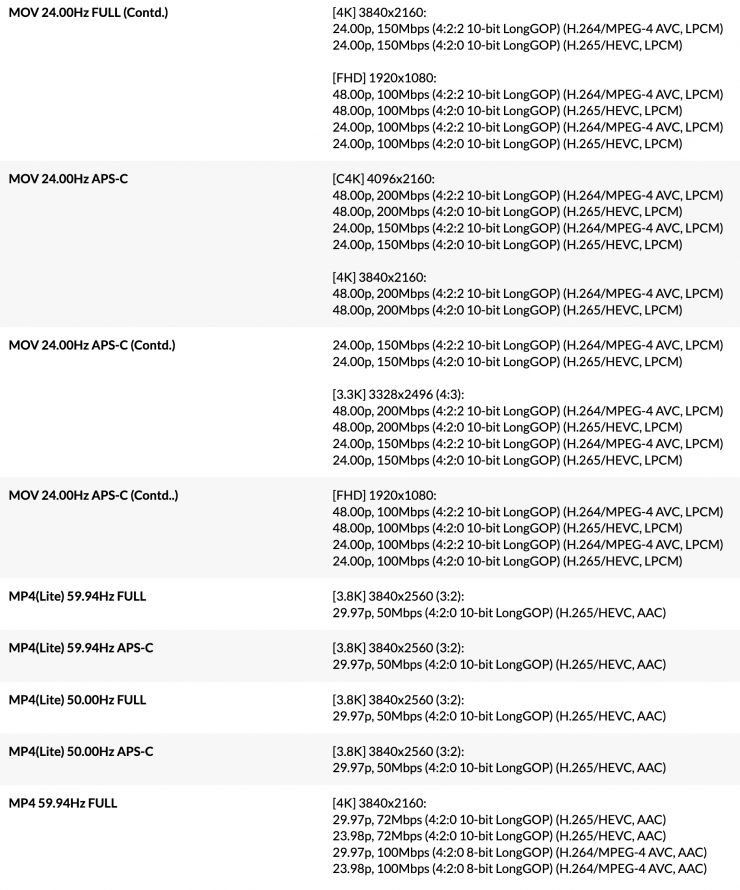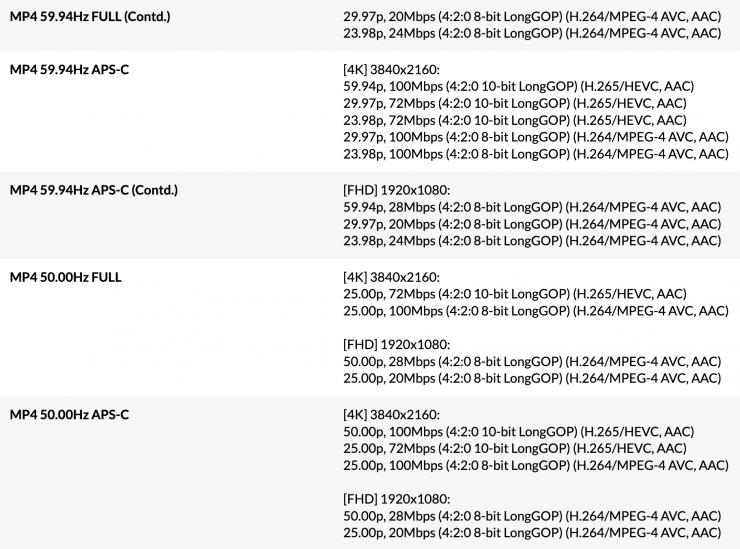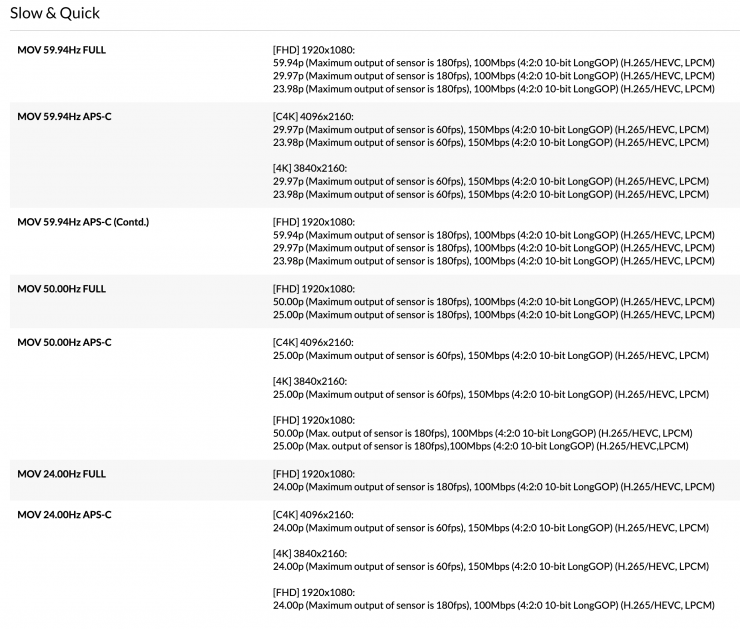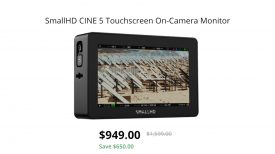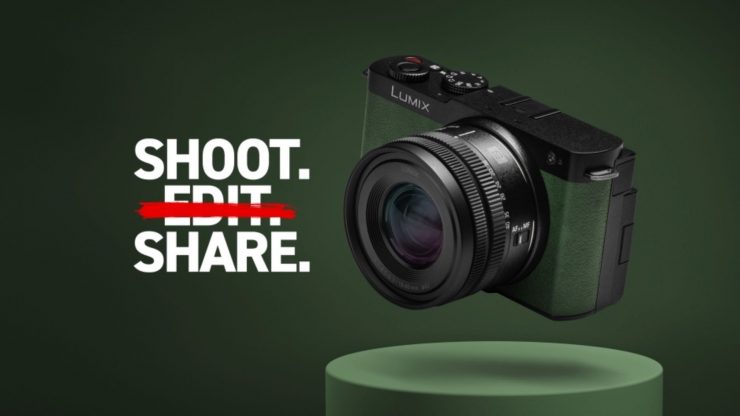
Panasonic has announced its new compact LUMIX S9 mirrorless hybrid. This appears to be a full frame replacement for the G9 II. Panasonic is one of the few companies that was still holding onto M4/3 and the S9 perhaps signals that they will be moving away from that format.
The Panasonic LUMIX S9 is a relatively lightweight entry level full frame mirrorless camera that features a Phase Hybrid autofocus system, in-body stabilization, and the ability to record 6K30p 4:2:0 10-Bit, and C4K/4K60p 4:2:2 10-Bit.
Essentially it looks like Panasonic has taken most of the internals from the S5 II and put them into a more compact body.
Key features
- 24.2MP Full-Frame CMOS Sensor
- Compact, Lightweight Design
- 6K30p 4:2:0 10-Bit Video Recording
- C4K/4K60p 4:2:2 10-Bit Unlimited
- 3.0″ 1.84m-Dot Tilt/Free-Angle Touch-LCD
- 5-Axis Sensor-Shift Image Stabilization
- ISO 100-51200
- Real-Time LUT (Signature Presets)
- 4:2:0 10-Bit Fast-/Slow-Motion Video
- Crop & Hybrid Zoom
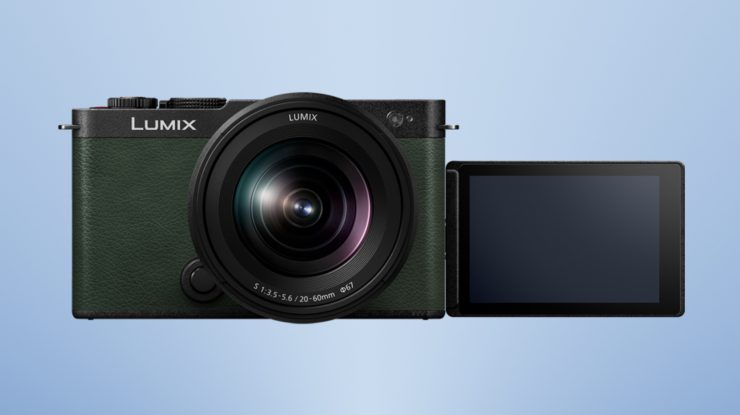
The LUMIX S9 utilizes a 24.4MP full-frame sensor, which appears to be the exact same one that is used in the S5 II.
So let’s get straight into what the camera offers as far as its key specifications are concerned.
| LUMIX S9 | |
| Sensor | 24.2MP CMOS |
| Dual Native ISO | V-Log 640/4000 HLG 400/2500 |
| AF | Phase Hybrid AF |
| IS | 5-Axis Sensor-Shift Image Stabilization |
| Internal Recording | 6K 3:2/17:9 4:2:0 10-bit (23.98/24/25/29.97p) 5.9K 16:9 4:2:0 10-bit (23.98/24/25/29.97p) DCI 4K/UHD 4:2:2 10-bit (23.98/24/25/29.97/47.95/ 48.00/50/59.94p) 3.3K (4:3) 4:2:2 10-bit (23.98/24/25/29.97/47.95/ 48.00/50p FHD 4:2:2 10-bit (23.98/24/25/29.97/47.95/ 48.00/50/59.94/ 100.00/119.88p) |
| External Recording via USB-C to an SSD | No |
| External Recording via HDMI | UHD 4K (3840 x 2160) up to 50/59.94 fps4:2:2 10-bit |
| Unlimited Recording Time | No* |
| LCD | 3.0″ 1.84m-Dot Tilt/Free-Angle Touch-LCD |
| EVF | No |
| HDMI | Type C |
| Real Time LUT | Yes |
| V-Log | Yes |
*Recording stops when the continuous recording time exceeds 10 minutes in [6K] [5.9K].
– Recording stops when the continuous recording time exceeds 15 minutes in [C4K] [4K] [3.8K] [3.3K].
– Recording stops when the continuous recording time exceeds 20 minutes in [FHD].
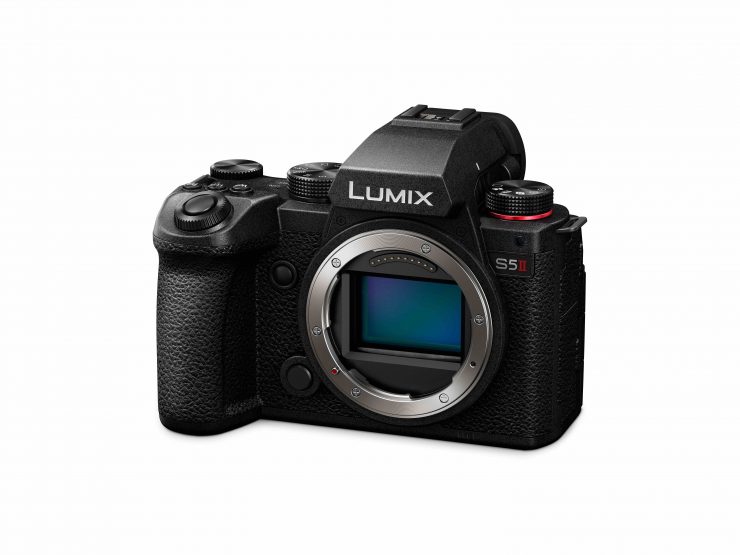
Now, while the LUMIX S9 is a sub $1,500 USD mirrorless hybrid that looks to provide a good balance of still and video performance, it is only $300 USD cheaper than the S5 II.
Size & Weight
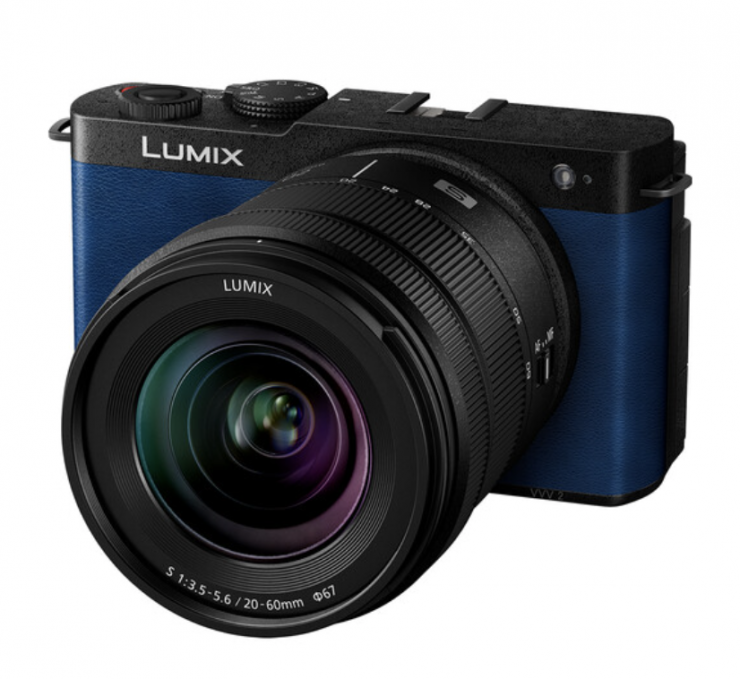
The LUMIX S9 weighs 403.7g / 0.89 lb, which makes it considerably lighter than the S5 II which weighs 740g / 1.63 lb (Body, Hot Shoe Cover, Battery, Card x 1).
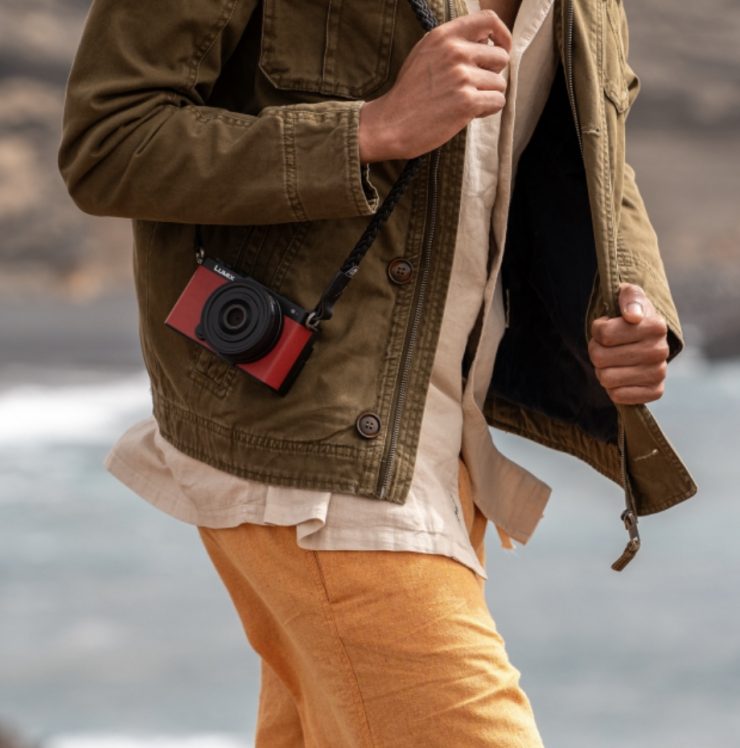
So how does this weight compare to some other entry level full-frame mirrorless hybrids? Below you can see:
| WEIGHT | |
| Panasonic LUMIX S9 | 403.7g / 0.89 lb (Body Only) |
| Nikon Z5 | 590g / 1.3 lb (Body Only) |
| Sony a7C | 509g / 1.1 lb (With Battery, Recording Media) |
| Sony ZV-E1 | 399g / 0.88 lb (Body Only) |
| Canon EOS R8 | 441g / 0.9 lb (Body Only) |
| Sigma fp | 370 g / 0.81 lb (Body Only) |
As you can see, the LUMIX S9 is slightly lighter than most of its main competition.
With its low weight, it would be a good solution when using a lightweight gimbal or as a second camera if you are using a larger S5 II / S5 II x, etc.
Handling

The LUMIX S9 is essentially a rectangular shape and it doesn’t feature any direct handgrip on the side. As it also doesn’t feature any EVF users will probably have to hold it out in front of them with both hands when shooting. Cameras without an EVF can be difficult to use in bright conditions outdoors as the screen can be hard to see. It also makes getting critical focus more difficult because you are relying on looking at a small-sized screen.
Sensor
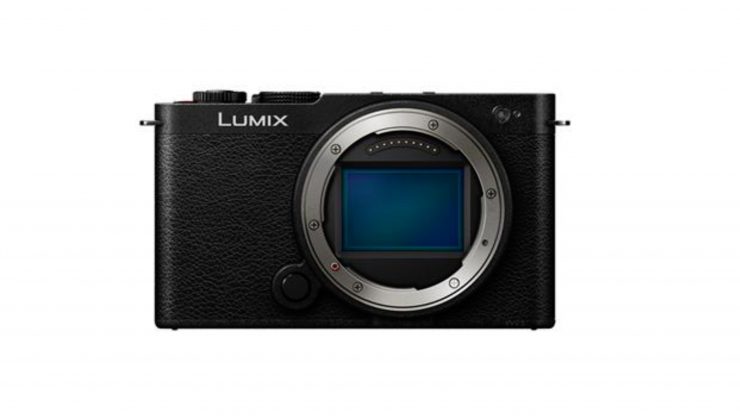
The LUMIX S9 appears to be using the exact same 24.2-megapixel 35mm full-frame CMOS sensor (35.6 mm x 23.8mm) sensor that is in the S5 II and S5 II x. Yes, this is also the same size as the sensor that was used in the original S5. The camera does not have an OLPF (Optical Low Pass Filter).
There has been much debate about increased resolutions and whether we actually need them. The LUMIX S9 uses a 6K sensor as opposed to a native 4K sensor. Due to loss of resolution to Bayer pattern math, at least 5.7K is needed to deliver proper 4K RGB. It’s the same reason ARRI uses 2.8K to deliver 2K. The S9, in theory, should out-resolve any 4K native camera, as it can clearly delineate 2000 line pairs while most others max out at about 1600.
The sensor also utilizes a non-dust system. This prevents dust from adhering to the sensor which is nice when you are changing lenses. How it works is that a supersonic wave filter (SSWF) creates around 80,000 times / second of ultrasonic vibration between the image sensor and the shutter each time the power is turned on.
According to Panasonic, the processing engine used in the LUMIX S9 offers a lot of advancement in terms of resolution and reproducibility for full-size image sensors.
In addition, the high-precision multi-process NR installed in the engine is said to improve the separation performance of the detail and flat parts of the subject. By separating the signal and noise components more accurately and effectively suppressing noise according to the characteristics of the image, Panasonic claims it is possible to achieve a stunning and realistic depiction even with high sensitivity.
Autofocus
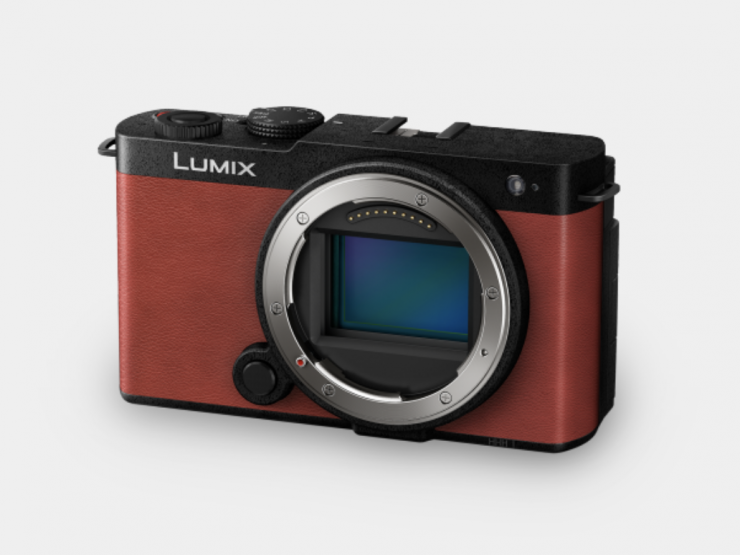
For a long time, and arguably still, Panasonic hasn’t exactly had a good reputation for autofocus performance, especially when it came to video. Just like the S5 II and S5 II x, the LUMIX S9 utilizes a Phase Hybrid AF system.
One of the biggest stumbling blocks, when it came to trying to convince people to buy a Panasonic mirrorless hybrid, was the poor AF performance. The Lumix series cameras lagged a long way behind their competition and that turned a lot of potential users off. While the Phase Hybrid AF system is a big movement over what Panasonics used to use, it still arguably lags behind the competition.
Panasonic’s Phase Hybrid AF system utilizes 779 AF points. Panasonic claims that by combining Phase Hybrid AF with their recognition technology, they have massively improved the tracking abilities.
They also claim that the AF is now better at tracking multiple subjects at once, and is better in highly backlit conditions and in low-light environments. Continuous AF during zooming and AF micro adjustment is also available.
Active I.S.
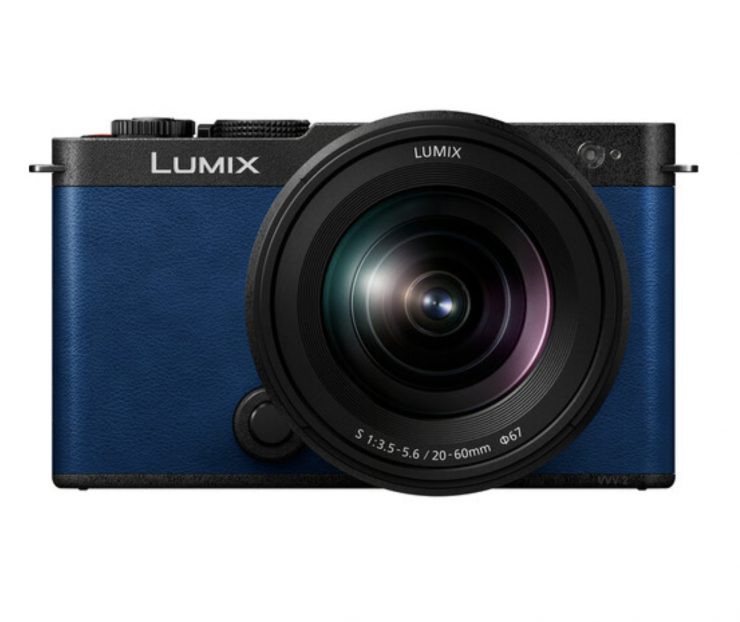
The S9 features Panasonic’s Active I.S. in-body image stabilization. Panasonic developed an algorithm that is claimed to precisely calculate shake using information acquired not only from a gyro-sensor but also from the image sensor and an accelerometer sensor within the body of the camera. This is said to enable more accurate shake detection and compensation. According to Panasonic, the system is claimed to offer industry-leading stabilization for video shooters.
There are now 4 different types of I.S. you can choose from:
- B.I.S Dual I.S.2
- Active I.S.
- E.I.S
- Boost I.S
By combining the Body I.S. (5-axis) in the camera and the O.I.S. (Optical Image Stabiliser, 2-axis) in the LUMIX S Series lens, the 5-axis Dual I.S. compensates for larger movements than are controllable by conventional methods.
The 5-axis Dual I.S.2 works for both photo and video modes, including 6K, 5.9K, 5.8K, 4K, UHD, HD, and anamorphic recording. The Body I.S. compensates for camera movement even when L-Mount lenses without O.I.S. are used and when other lenses are fitted via an adapter
The Active I.S. works really well, and it certainly should allow you to capture very steady footage when shooting handheld. If you combine a Panasonic lens such as the 24-105mm that has O.I.S with in-body image stabilization you should be able to obtain remarkably steady shots when shooting handheld.
There is also an additional E-Stabilization mode you can activate where camera shake is corrected along with vertical, horizontal, roll, pitch, and yaw axes through the combined uses of in-lens, in-body, and electronic image stabilization.
The biggest downside to using IBIS and OIS is that if you try and do pans or tilts you can get this bad floating effect that makes it hard to do anything smoothly. If you are shooting anything where you are getting lens flare you will also see the flare moving around in an unnatural way. Now, you can change the stabilization operation mode to Normal, Panning (Auto), Panning (Left & right), and Panning (up & Down), but in a lot of situations, you are probably going to forget that you can change it.
There is a slight image crop when you turn on the E-Stabilization (video) mode, but it is fairly minimal. If you just have the Boost I.S (video) activated there is no crop.
Video Specifications
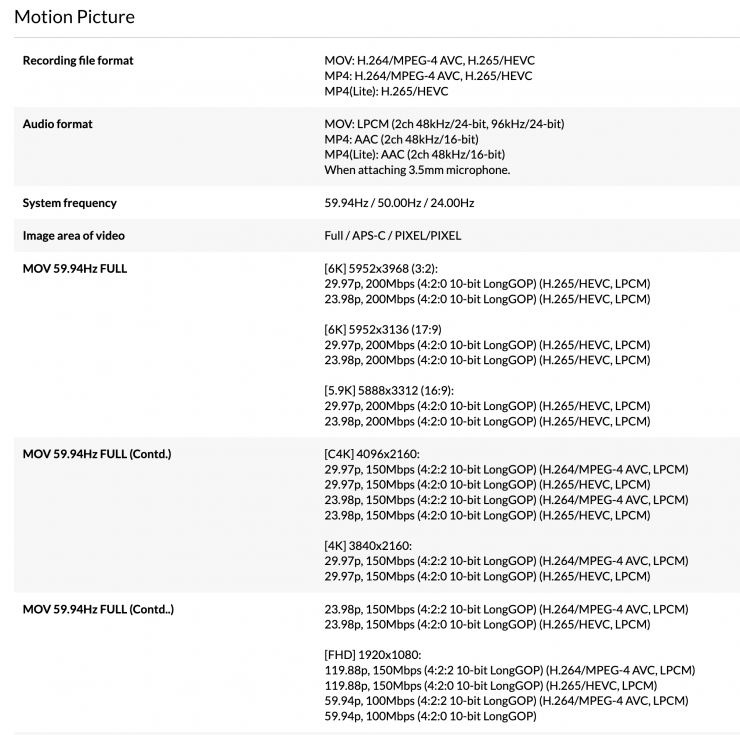
Despite being a hybrid mirrorless camera, Panasonic has always included good video specifications in its cameras.
Panasonic was the first company to introduce 4:2:2 10-bit internal recording in a mirrorless hybrid and they now have 13 cameras that are capable of recording UHD 4:2:2 10-bit internally. No other company making mirrorless hybrids can claim that. Here are the 13 cameras capable of capturing UHD 4:2:2 10-bit internally:
- Panasonic Lumix G9
- Panasonic Lumix BGH1
- Panasonic Lumix BS1H
- Panasonic Lumix GH5
- Panasonic Lumix GH5S
- Panasonic Lumix GH5II
- Panasonic Lumix GH6
- Panasonic Lumix S1H
- Panasonic Lumix S1
- Panasonic Lumix S1H
- Panasonic Lumix S5
- Panasonic Lumix S5 II
- Panasonic Lumix S5 II x
- Panasonic Lumix S9
Here is what the S9 can capture when it comes to internal video recording:
LUMIX S9 (No Crop) .MOV/ MP4
| RESOLUTION | BIT DEPTH | REC. FRAME RATE |
| 6K 3:2 (5952×3968) | 4:2:0 10-bit | 29.97p, 25.00p, 24.00p, 23.98p |
| 6K 17:9 5952×3136 | 4:2:0 10-bit | 29.97p, 25.00p, 24.00p, 23.98p |
| 5.9K 16:9 5888×3312 | 4:2:0 10-bit | 29.97p, 25.00p, 24.00p, 23.98p |
| 4K DCI 4096×2160 | 4:2:2 10-bit 4:2:0 10-bit | 29.97p, 25.00p, 24.00p, 23.98p |
| UHD | 4:2:2 10-bit 4:2:0 10-bit | 29.97p, 25.00p, 24.00p, 23.98p |
| HD | 4:2:2 10-bit 4:2:0 10-bit | 119.88p, 100.00p, 59.94p, 50.00p, 47.95p/ 48.00p, 29.97p, 25.00p, 24.00p, 23.98p |
When recording in 6K or 5.9K UHD you can record in 4:2:0 10-bit up to 29.97p in full-frame with no crop. You can shoot in 4K DCI or UHD in 4:2:2 10-bit at up to 29.97p. There is an APS-C sized crop when shooting in UHD at 50p or 59.94p. There is also an APS-C crop when shooting in HD at higher than 60fps and when shooting in the 4K anamorphic mode.
You can also shoot in the S&Q mode and do up to 1-180 fps in HD.
Recording Time Limitations?
As I mentioned earlier, there are serious continual recording limitations with this camera. Recording stops when the continuous recording time exceeds 10 minutes in [6K] [5.9K]. For [C4K] [4K] [3.8K] [3.3K] it is 15 minutes, and for [FHD] its 20 minutes. These limitations make the camera unsuitable for some applications.
LUMIX S9 (APS-C Crop) .MOV/ MP4
| RESOLUTION | BIT DEPTH | REC. FRAME RATE |
| 4K DCI 4096 x 2160 | 4:2:2 10-bit 4:2:0 10-bit | 59.94p, 50.00p, 47.95p/ 48.00p, 29.97p, 25.00p, 24.00p, 23.98p |
| UHD | 4:2:2 10-bit 4:2:0 10-bit | 59.94p, 50.00p, 47.95p/ 48.00p, 29.97p, 25.00p, 24.00p, 23.98p |
| 3.3K (4:3) | 4:2:2 10-bit 4:2:0 10-bit | 59.94p, 50.00p, 47.95p/ 48.00p, 29.97p, 25.00p, 24.00p, 23.98p |
| HD | 4:2:2 10-bit 4:2:0 10-bit | 119.88p, 100.00p, 59.94p, 50.00p, 47.95p/ 48.00p, 29.97p, 25.00p, 24.00p, 23.98p |
You can only shoot in the APS-C crop mode if you want to record 4K DCI or UHS at frame rates above 29.97p. The 3.3K anamorphic mode is only available when using the cameras in their APS-C crop modes.
Anamorphic Capabilities
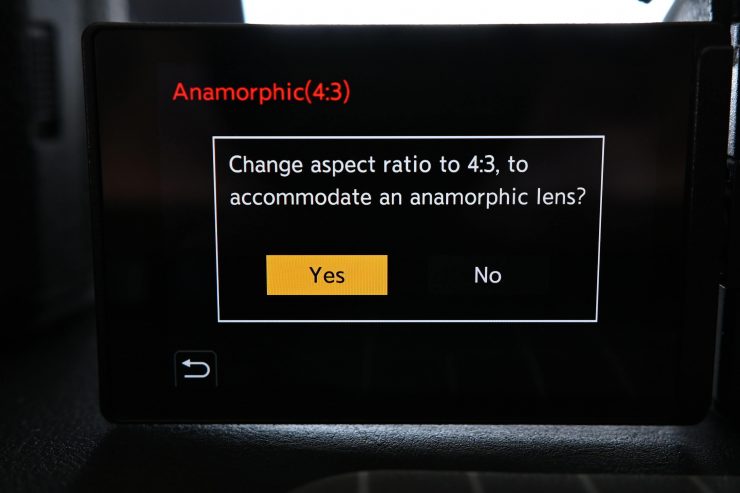
The S9 has a few options when shooting anamorphic.
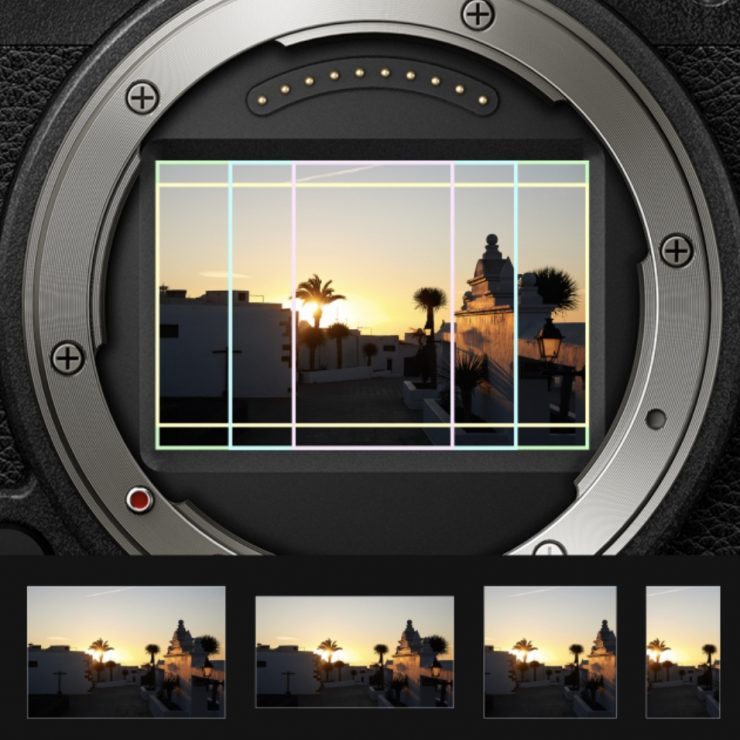
The camera can record 3328 x 2496 4:2:2 10-bit up to 50p.
Now, some of these video specifications may not seem overly exciting given what the Canon EOS R5, Nikon Z9, and Sony a9 are capable of, but you have to remember the S9 is a sub $1,500 USD full-frame camera.
RAW Recording?
I am unsure if the S9 will be able to output a 5.9K RAW signal that will be able to be recorded to a compatible Atomos device in ProRes RAW.
This is what can be recorded from the S5 II and S5 II x:
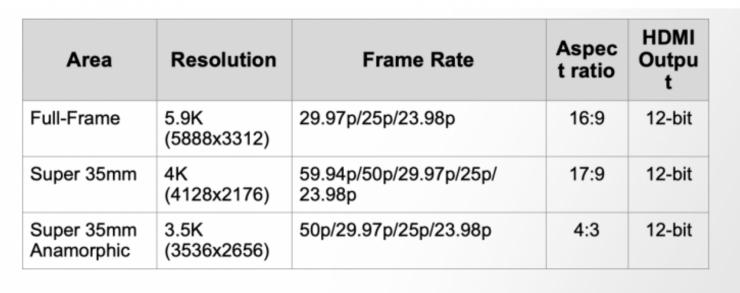
Apple ProRes RAW can be recorded on Atomos Ninja V. V-Log or Rec.709 is selectable on Live View monitor during RAW output.
Shooting assist functions including WFM (Wave Form Monitor), Vector Scope, Luminance Spot Meter, Zebra Pattern can be used during RAW output.
A LUT (Lookup table) exclusively designed for RAW video recorded on NINJA V is available from: https://panasonic.jp/support/global/cs/dsc/download/lut/s1h_raw_lut/index.html.
This LUT allows you to match the color grading with V-Log/V-Gamut2. Using this new LUT, you can match colors between the footage recorded with Panasonic Varicam, EVA1, S1H, and GH5/GH6 series cameras to combine them.
You can also RAW video data over HDMI to Blackmagic Video Assist 12G HDR. This enables 5.9K / 4K / Anamorphic (4:3) 3.5K 12-bit RAW video data output over HDMI to Blackmagic Video Assist 12G HDR, to be recorded as Blackmagic RAW.
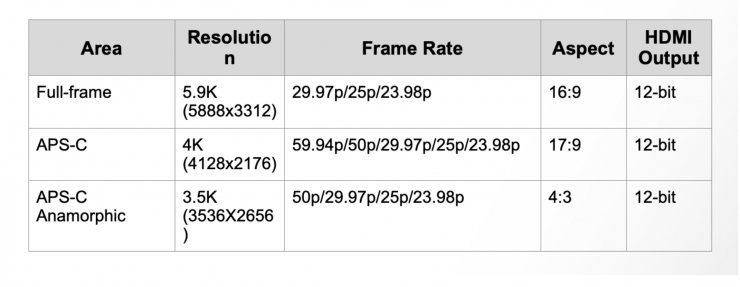
What about the heat?
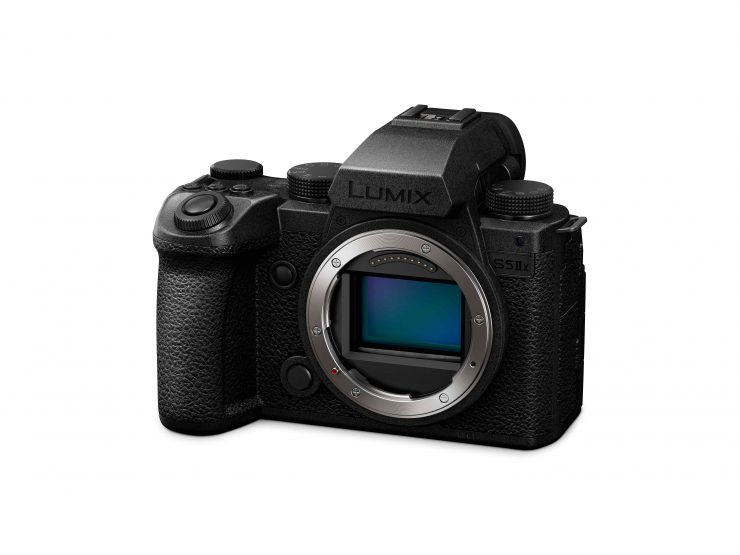
Full frame mirrorless cameras recording 4K and higher resolution video generate a lot of heat. Unlike digital cinema cameras that have large cooling systems and vents to dissipate the heat, mirrorless cameras are weather sealed. This means that there is nowhere for the heat to escape. A lot of full-frame mirrorless cameras suffer from overheating problems when they are recording video.
Panasonic does a lot of testing with its mirrorless hybrids, and they told me that they need to be able to run continuously without any issues in 40°C (104°F) temperatures. Hence, why a fan is required so that you don’t have any recording limitations in most of the recording modes. One of the reasons some products have limitations usually has to do with reliability. You could take a normal consumer car and reprogram the computer to make it go faster, but that will affect reliability, fuel efficiency, and the lifespan of that engine and its components. Cameras are no different.
In saying that, cameras from a lot of manufacturers for many years have been artificially limited in their capabilities, mainly because of market segmentation, although that has started to change. If you are offering several models at different price points then the manufacturer will inevitably not include, or limit some forms of functionality in the camera. Any manufacturer has the right to do this. Whether a camera can do more than it is actually capable of is irrelevant. If a manufacturer chooses to limit the capabilities or performance of a camera that is their choice. As a consumer, you may not be happy about this, but nobody forces anyone to buy a camera. If you don’t like what a certain manufacturer has done then don’t give them your money.
The LUMIX S9, like most full-frame mirrorless hybrid cameras, is not going to be immune from heat warnings. The camera may stop recording when used at a temperature that is lower or higher than the recommended operating temperature (0 to 40 degrees). If the temperature of the camera rises a temperature icon will be displayed. Recording may stop, and some functions may become unavailable temporarily. You need to wait until the camera cools down.
No weather-sealed full-frame mirrorless hybrid is going to be immune from heat issues, period. If you don’t add a proper cooling system to any camera you are going to run into issues.
Dual Native ISO
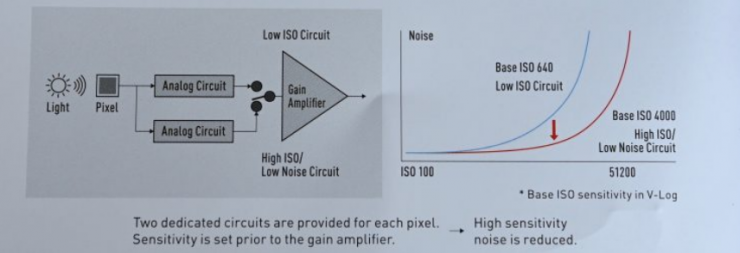
Just like the S1H, S5, S5 II and S5 II x, the LUMIX S9 has a dual native ISO. The Dual Native ISO is 100/640 in standard recording modes and 640/4000 when shooting in V-Log. Speaking of V-Log, that will be the picture profile for maxing out the S9’s fourteen stops of dynamic range, cementing the S9 as a great B-Cam for videographers using larger Lumix models. Cinelike D2 / V2 recording modes have also been ported over for faster turnaround on projects.Normally noise increases as sensitivity rises with a single native ISO image sensor. However, the image sensor with Dual Native ISO in the S9 is claimed to minimize noise generation by choosing the optimum circuit to use before gain processing, according to the ISO sensitivity that is set.
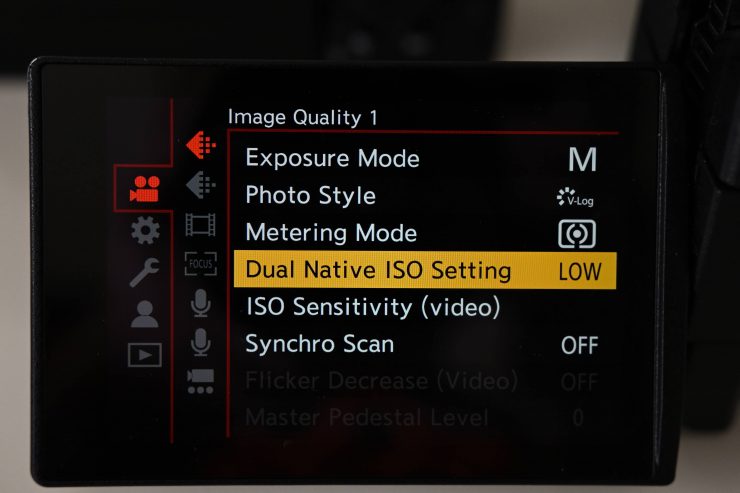
The Dual Native ISO feature can be switched manually between LOW and HIGH like on the S1H, S5 II, and S5 II x. You can also set it to AUTO.
Now, the Dual Native ISOs do change depending on what profile you are shooting in:
- Normal picture profiles: 100 and 640 ISO
- V-Log: 640 and 4000 ISO
- HLG: 400 and 2500 ISO
- Cinelike D2/V2: 200 and 1250 ISO
Picture Profiles
On the LUMIX S9 you can choose to shoot in the following picture profiles:
- Standard
- Vivid
- Natural
- Flat
- Landscape
- Portrait
- Monochrome
- L.Monochrome
- L.Monochrome D
- Cinelike D2 (gamma curve that gives priority to dynamic range)
- Cinelike V2 (gamma curve that gives priority to contrast)
- Like709 (mimics a Rec.709 gamma curve)
- V-Log
- Like2100(HLG)
- MyPHOTO STYLE
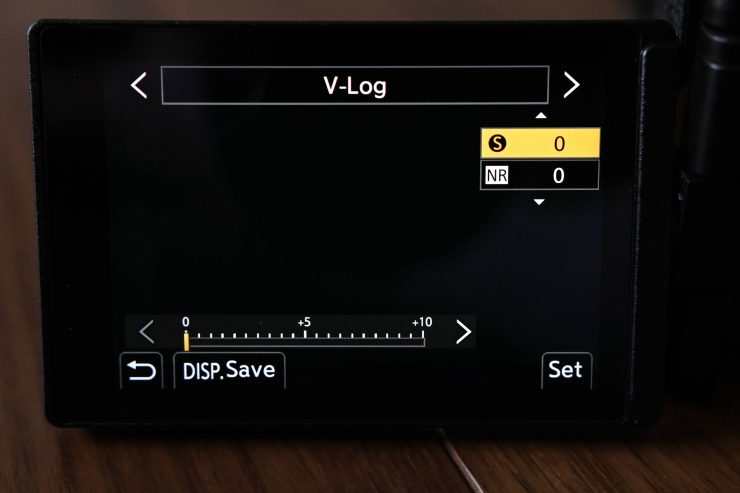
You can make adjustments to certain parameters once you choose a picture style. With V-Log and Like2100(HLG) you can’t change as many parameters for obvious reasons.
Cinelike D2, Cinelike V2, and Like709 are all good options if you don’t want to record in V-Log.
Real-Time LUT
On the S9 you have the ability to use what Panasonic refers to as Real Time LUT. Essentially this just means that you can load up a user LUT and then choose to have that LUT baked into your footage. This is useful if you have fast turnaround times or you don’t want to deal with Log footage in post or if you don’t want to use one of the picture profiles.
LUMIX LAB
The new Lumix Lab smartphone app that Panasonic is set to launch alongside the S9 will help you quickly and reliably transfer photos and videos from the camera, easily applying edits before uploading them straight to your social media platform of choice. The app also allows you to create original LUTs, saving them to the camera and the phone. Download other creators’ LUTs for an endless supply of styles and flavors. An additional app-focused MP4 Lite recording mode in the S9 captures H.265 50Mbps files built for easy sharing.

Using the REAL TIME LUT function, you can apply your desired LUTs (filter-like effects) directly in the camera to your work even before shooting. In combination with the LUMIX Lab app, you can easily create your own LUTs and install them on the camera.
Easy color-grade on your camera or in app
You can make further LUT adjustments (Intensity adjustment, LUT file layering, etc.) on the camera as well.
No need for time-consuming edits
By utilizing this feature, you can save time on the complicated post-editing process. The app has your back for instant sharing whenever inspiration strikes.
Simple editing for any social media platform
Simple editing for any social media platform can be done in a snap. The app offers a wide range of editing features allowing for personalized expression.
Ultra-fast content transfer
Ultra fast connection and fast file transfer with the app supports your instant post on social media.
Download the creator’s LUT
Find a wind selection of LUTs created by different creators. You can download their LUTs and install them on your camera, so you can apply them when shooting your work.
V-Log/V-Gamut
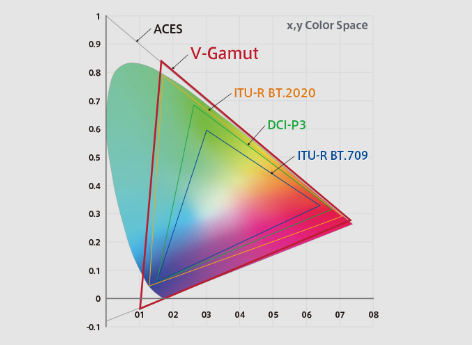
The S9 has V-Log/V-Gamut included as standard
According to Panasonic, the S9 recorded footage is compatible with V-Log footage recorded by VariCam or V-Log L footage recorded by other LUMIX cameras such as the GH5/GH5S, GH6, S1H, S1, S5 II, and S5 II x.
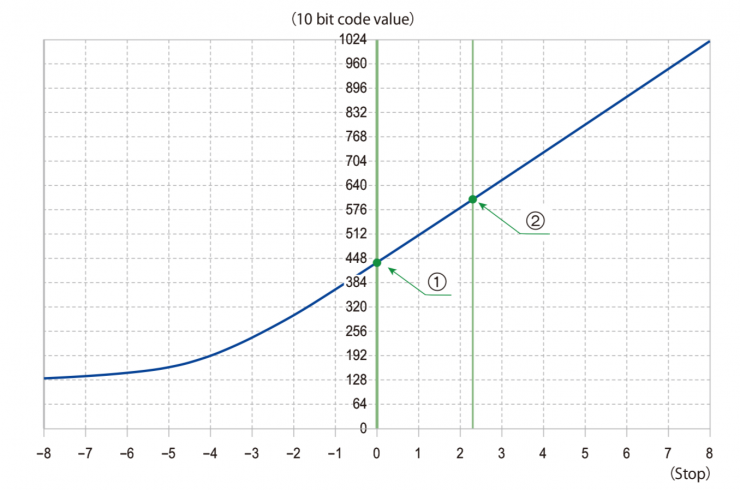
The [V-Log] curve characteristics comply with “V-Log/V-Gamut REFERENCE MANUAL Rev.1.0”. When set to [V-Log], the standard exposure when grey with a reflectance ratio of 18% is imaged is IRE 42%.

It’s nice to see that Panasonic has included V-Log/V-Gamut in the S9 and not made it a paid option.
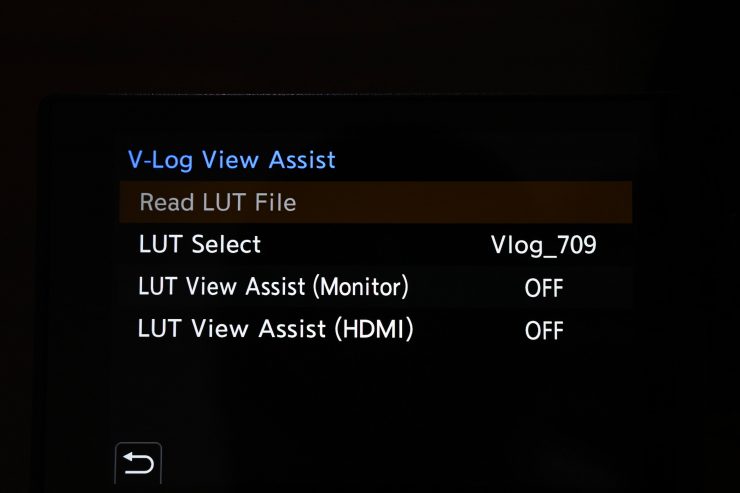
V-Log View Assist is also available on the camera. V-Log View Assist means you can show images with a LUT applied on the monitor/viewfinder and also output that via HDMI.
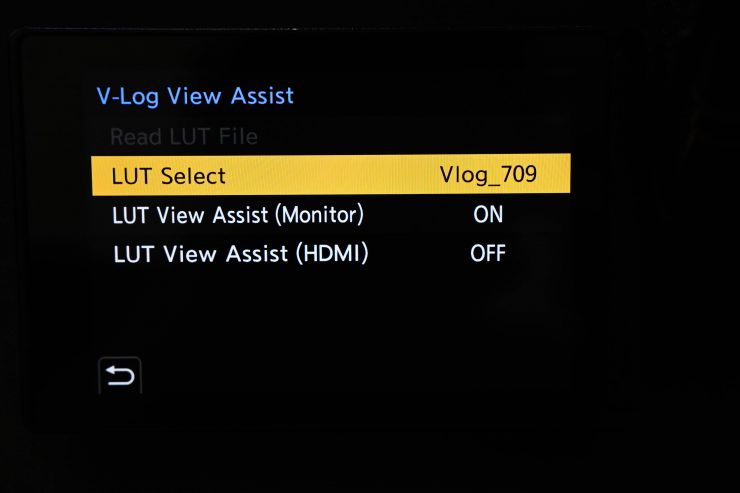
Above you can see the options that are available when using V-Log View Assist.
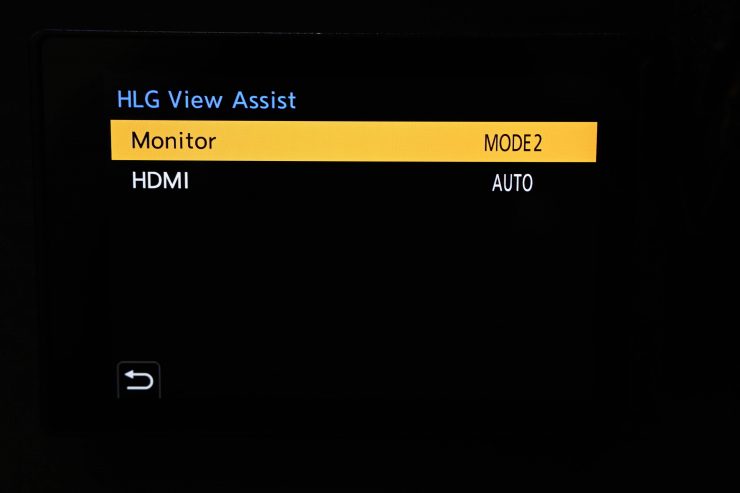
There is also a couple of view assist options if you are shooting in HLG.
I’m not the biggest fan of the V-Log to 709 LUT. In my personal opinion, it just doesn’t look good and makes everything way too magenta for my liking. Skin tones don’t look good if you are shooting in V-Log and then just using the LUT.
Luminance Level
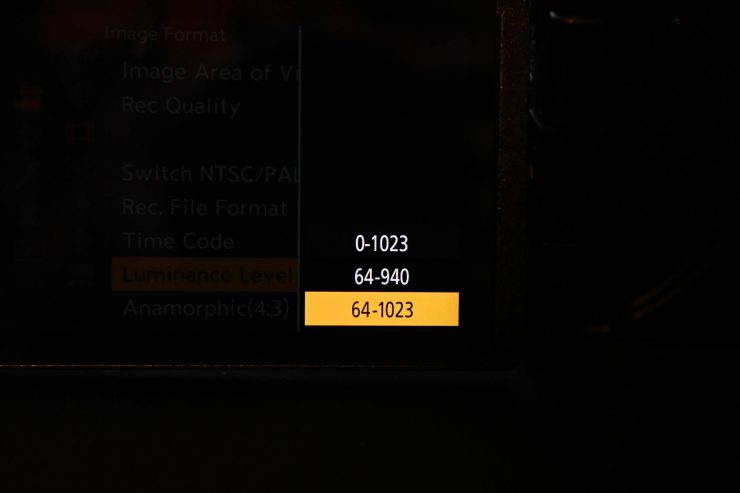
Panasonic also gives you the ability to assign the luminous range when recording video. When shooting in any of the 8-bit codecs you can choose to set the luminous range at:
- 0-255
- 16-235
- 16-255
Now, the luminance range settings will change themselves if you are shooting in any of the 10-bit codecs. Instead of the above, you can choose to set them at:
- 0-1023
- 64-940
- 64-1023
In V-Log you can’t adjust the luminous range. It is preset at 0-255 when shooting in an 8-bit codec and 0-1023 when shooting in a 10-bit codec.
Codecs
Now, there is always going to be a catch with a sub $1,500 USD hybrid mirrorless camera. With the S9 you can only record internally in 6K and 5.9K in 4:2:0 10-bit and only up to 29.97p.
The cameras can record in:
MOV: H.264/MPEG-4 AVC, H.265/HEVC
MP4: H.264/MPEG-4 AVC, H.265/HEVC
The maximum internal bitrate is 200Mbps.
What does it record to?
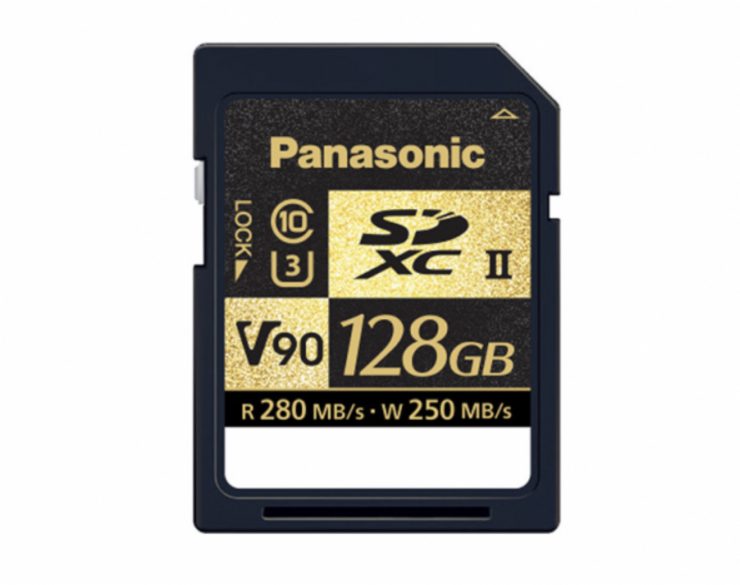
The S9 features a single SD card slot. The slot is compatible with UHS-I/UHS-II cards.
What can it output over HDMI?
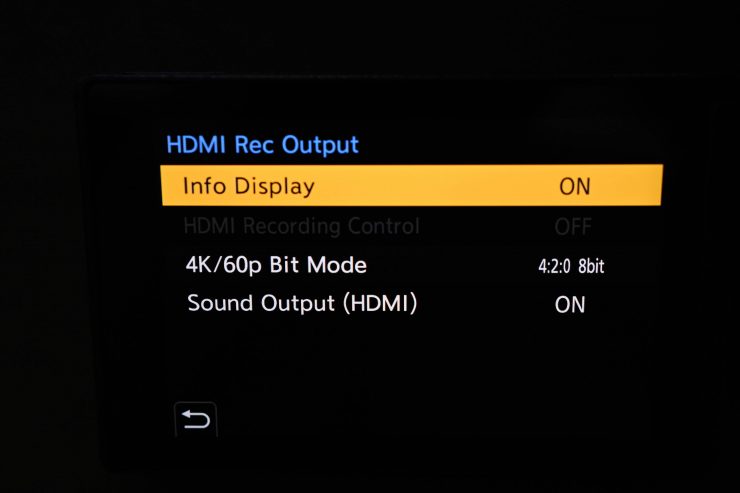
The S9 can output up to 5.9K 4:2:2 10-bit at up to 29.97p over HDMI. If you are outputting 4K 4:2:2 10-bit up to 30p over HDMI you can still simultaneously record in camera. Unfortunately, the HDMI is an HDMI YTYpe D connector.

The cameras can output 4:2:2 10bit when [Rec Quality] is set to [4:2:2 10bit] or [4:2:0 10bit]. They will output 4:2:2 8bit when [Rec Quality] is set to [4:2:0 8bit].
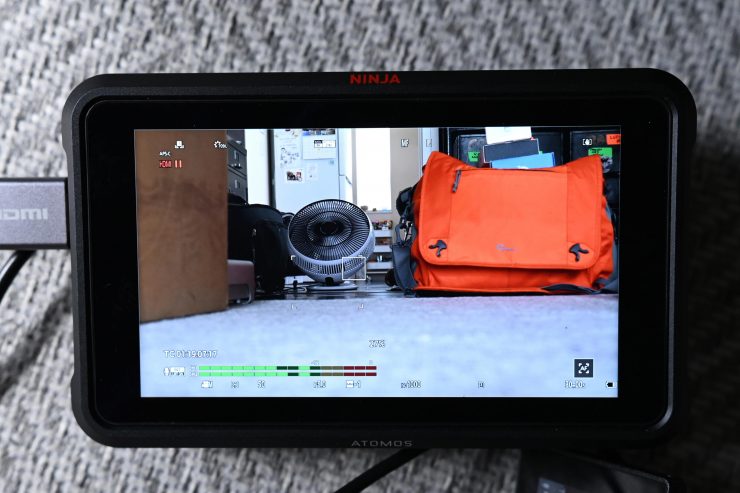
You can choose to output the camera’s information over HDMI so you can see menus and replicate the rear LCD screen. This is handy if you are just using an external monitor for display purposes only.
In a lot of ways, the S9 is going to provide you with similar image quality to the S5 II. You also get a lot of the same recording modes internally, unlimited recording times, and the ability to record in ALL-I codecs.
Dynamic range
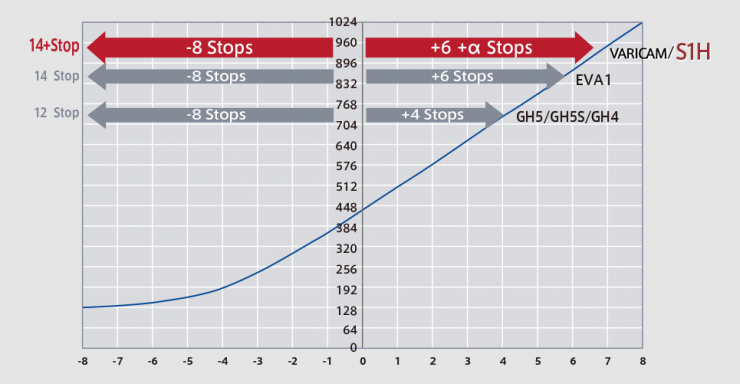
While the camera has a good amount of dynamic range, out of the claimed 14 stops, 8 of those are below middle grey. This claimed dynamic range is the same as the claimed dynamic range of the S1H, S5, S5 II, S5 II x, Varicam LT, Varicam 35, and EVA1.
There is absolutely nothing wrong with doing scientific dynamic range tests, however, I am more interested in seeing how that dynamic range translates to real-world shooting conditions. The amount of stops a camera has doesn’t mean anything, especially if the highlight handling of the camera isn’t great. The S9 may well have 13-14 stops of dynamic range, but they don’t roll off highlights that smoothly, and they hard clip them before you get anywhere near 100 IRE. Despite the highlight roll-off being quite aggressive on scopes, when looking at actual real-world images it isn’t nearly as bad as the scopes indicate.
The overall dynamic range of the S9 should still be pretty good and if you can’t work with the DR the camera has you are doing something very wrong. All modern-day cameras have a pretty decent dynamic range.
Accurate Colors?
You hear people talking about color science all the time, but in my opinion, color science is really only applicable or debatable when you are not shooting Log or RAW. If you are someone who needs a camera where they just want to turn material around quickly or hand it off to someone who won’t be grading it, then choose a camera that you think looks good when you are shooting in a regular picture profile. The S9, like most Lumix cameras, should give you a nice-looking image shooting directly in the L709 or some of the other standard picture profiles.
It is fairly easy for any camera to reproduce a single color (for example a blue sky) but where it is a lot more challenging to reproduce lots of different colors accurately at the same time.
Color accuracy is a hard one to judge as both lenses and lighting will play a factor in how color is perceived.
Lens Mount
The S9 uses the L Mount. The L Mount is fairly adaptable and there is a range of adaptors you can use to run non-native L Mount lenses if need be.
One of the interesting things I found out in the past from Panasonic was that a large proportion of S1H users weren’t using native L-mount glass on their cameras. A lot of people were running cinema glass through the use of adaptors. However, with the improved autofocus of the S9 more users are likely to use native glass instead of cinema glass, especially given who this camera is being targeted at.
One of the key drawcards of the L Mount is its short flange focal distance. With an inner diameter 51.6 mm and a flange depth of 20.0 mm it allows enough room to place a lens adapter ring between just about any lens and the L Mount.
Below are the flange depths of some other camera systems:
- Nikon Z Mount 16mm
- Fujifilm X-Mount 17.7mm
- Sony E-Mount 18mm
- Canon RF-Mount 20mm
- Leica M-Mount 27.8mm
- Contax G-Mount 29mm
- Canon EF-Mount 44mm
- Nikon F-Mount 46.5mm
Wooden Camera makes a PL to L Mount conversion kit if you want to run cinema glass on your S5. There are also other PL to L Mount Adapter options from a wide range of companies, including Fotodiox, c7 Adapters, Leitz, Kippon, and Sigma.
One of the biggest stumbling blocks for Panasonic in trying to sell any of Lumix S series cameras used to be lens choices. However, Panasonic now has a pretty comprehensive range of native lenses in L mount. Third-party lens manufacturers are also now making more lenses in L mount.
The Lumix S lenses are optically very good, but they have tended to be quite expensive.
Fully Rotatable Screen
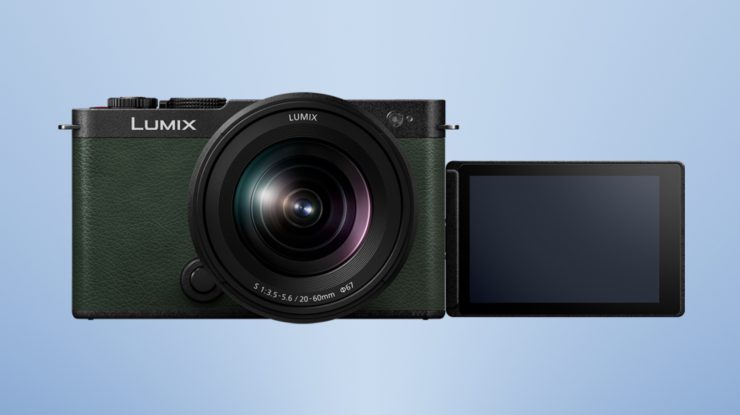
The S9 comes with a 3.0″ 1.84m-Dot Tilt/Free-Angle Touch-LCD. This screen is probably the same one that is used on the S5 II and S5 II x.
The 3″ LCD should be easy enough to use and I think most users will be happy with its design. The touchscreen functionality of the S5 II and S5 II x was pretty good, so I expect this to be the same.
I like that the fold-out monitor can be flipped around and completely hidden away. It means that when you are putting the camera in a bag or transporting it the rear screen won’t get accidentally scratched.
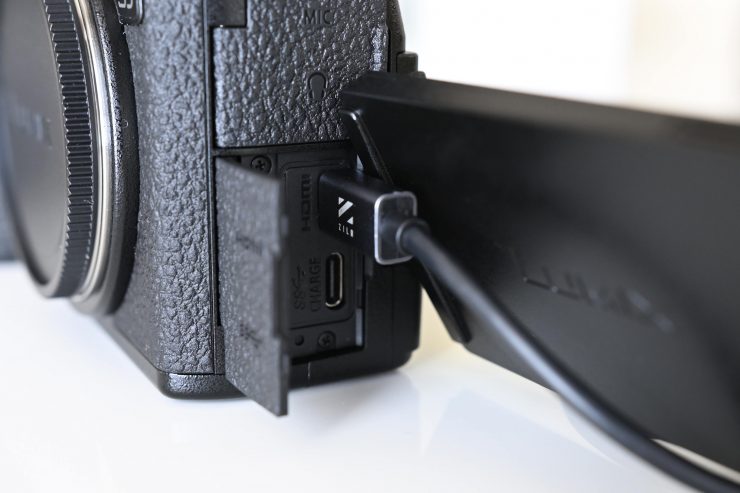
The only trouble with the screen on the S9 is the rotation is limited if you have an HDMI cable plugged into the body of the camera. The screen ends up hitting the HDMI cable. I had the exact same issue when I was reviewing the S5 II and S1H.
Battery & Powering
You can charge the camera’s battery via the USB-C port on the body, and Panasonic has specifically designed it to play nice with portable power banks. A full battery gets you a reported 470 shots in standard conditions.
White Balance
On a lot of mirrorless cameras doing a white balance is far more complicated than it should be.
With the S9 it is quick to do a custom white balance. You can store up to 4 custom white balance settings, and there are additional 4-Kelvin color temperature settings you can also store.
You can also choose AWB as well as 7 other preset-defined white balance settings.
Image Area of Video
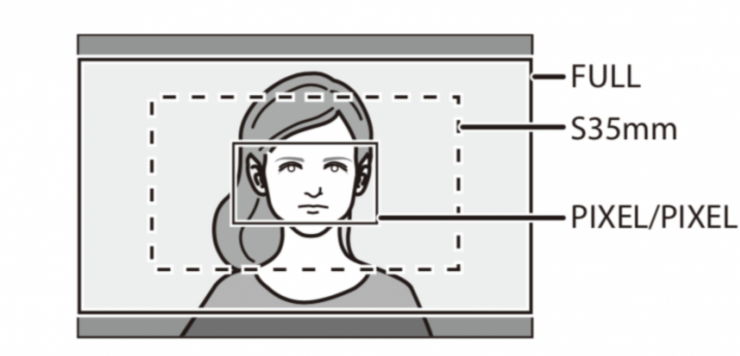
As the S9 utilizes a full-frame sensor you can choose what image area you would like to capture. The angle of view differs depending on the image area. By choosing a different image area you can effectively extend your lenses focal reach without image deterioration.
You can only choose Image Area when recording in various codecs and frame rates. In a lot of the UHD and HD modes, you can choose Full Frame, S35, and Pixel/Pixel.
Where this option is impressive is when you are recording in HD. Here you can select from using Full Frame, S35mm, or Pixel/Pixel. This is very handy as you can use one full-frame zoom lens such as the 24-105mm F4 to shoot just about anything you need. If you are shooting events, news, or even weddings, and you need to deliver in HD, an S9 and 24-105mm F4 full-frame zoom makes for a compelling solution.
If you are shooting in UHD, selecting APS-C or Pixel/Pixel gives you the same result.
The other benefit of pixel to pixel when shooting in HD is that you can get incredibly good macro shots with a standard lens.
I couldn’t see any large difference in image quality when using Full, S35mm, or Pixel/Pixel. The only thing I could see is that the Pixel/Pixel is probably not quite as sharp as the Full Frame or S35mm modes.
Of course, you also can’t choose to shoot using the full view of the sensor if you are using a Super 35 mm/APS-C lens or if you have the Image Circle selected to S35mm.
Live Cropping
On the S9, just like with the S5 II and S5 II x, you can utilize a function called Live Cropping. What this essentially does is let you capture a zoomed-in view of your image.
By cropping a part of the image from what is displayed in the live view, you can record FHD video that incorporates panning and zooming as long as the camera stays in a fixed position. You can also just record a frame that doesn’t move.
You need to select a compatible recording mode and format to be able to record Live Cropping. If you have selected a recording format or recording quality where Live Cropping isn’t available, the camera will automatically switch to a recording format that is.
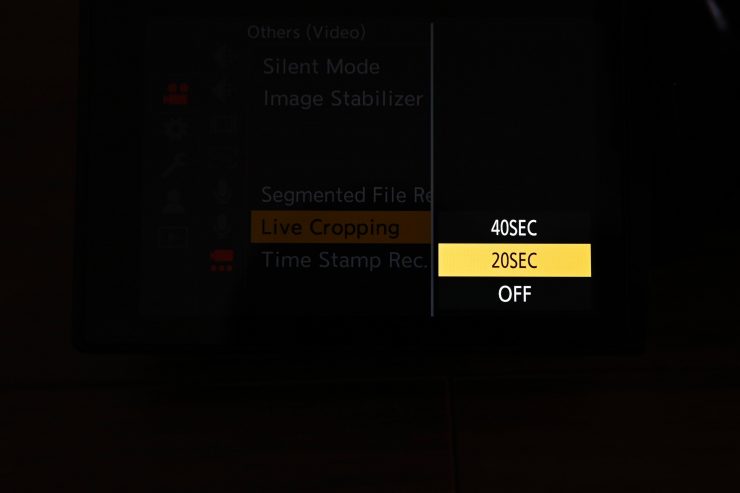
There is a little catch when using Live Cropping. You can only set the S9 to record for either 20 or 40 seconds. It’s a little strange that you can’t just set it to stay on whatever frame you have selected for as long as you want, but I’m sure Panasonic did this on purpose so that users wouldn’t forget that Live Cropping was activated.
You really need to use a tripod when doing Live Cropping. While you can do it handheld, the results won’t be nearly as good.
Live Cropping is a nice feature to have. While it’s great that you can do the cropping, panning, and zooming in-camera, there probably isn’t any real benefit overdoing it in post, unless you are handing footage off to a client or turning material around quickly.
Just to be crystal clear, anytime you are using Live Cropping, the recording will be done in HD. The HD recordings can be done at up to 60p 4.2.0 8 bit in MP4 only.
Timelapse
With the interval shooting function you can automatically set up time-lapse recording on the S9. The shooting interval can be set from 1 second to 99 minutes 59 seconds in increments of 1 second.
Once you finish recording a timelapse you can then turn it into a movie file without leaving the camera. The cameras support 4K / 60p interval video generation. What is nice is that the exposure is smoothed when the video is being generated so you can create time-lapse videos with smooth exposure changes.
Audio
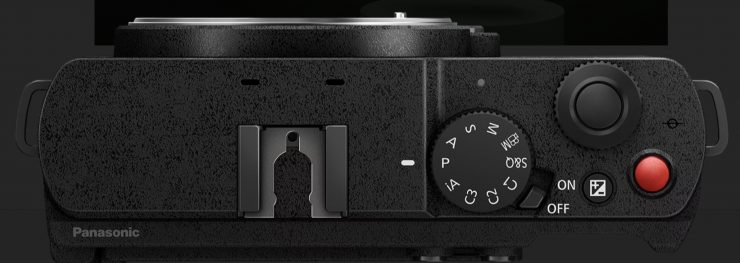
Good onboard audio recording is something that is rarely seen in mirrorless cameras. This is a pity because I would argue that manufacturers should be paying more attention to audio, especially with more video-centric models.
A good proportion of people buying an S9 are probably going to be doing their own audio and won’t have the benefit of using a sound recordist.
The S9 has limited audio capabilities and it is strange how Panasonic didn’t include a hot-shoe with an interface so you can use their optional XLR audio module.
When using the S9 the recording level range can be set from -12dB to +6dB. On the S1H you can set it from -18dB to + 12dB.
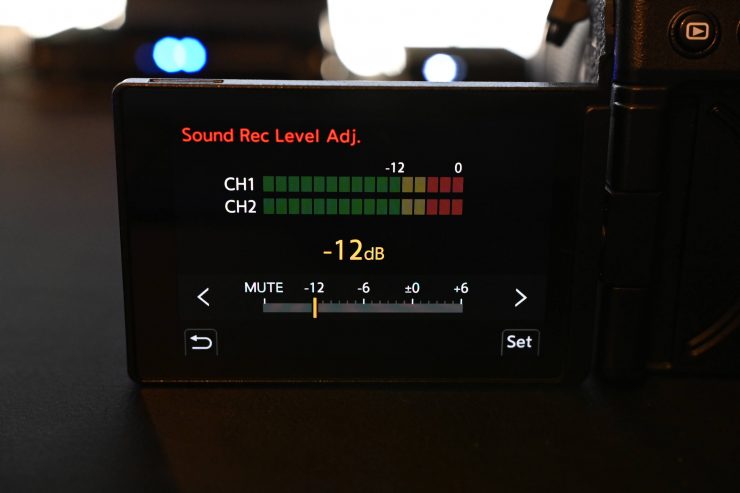
This ability to set the recording level very low means you can eliminate any internal pre-amp noise when you connect up an external audio device.
In the camera’s audio menu, you can also select the type of input you want to choose.
The S9 has a recording level meter that is displayed on the shooting screen. Unlike the S1H which uses meters with the same display characteristics as cinema cameras (-36dB to -12dB in 2dB increments and -12dB to 0dB in 1dB increments), the S9 only shows you indicators for -12dB and 0dB.
The S9 doesn’t display peak level values for each separate audio channel like the S1H does, in fact, it doesn’t display any peak audio values.
Now, as far as audio monitoring goes, the S9 has the same problem you will find on a lot of cameras. There is no way to monitor just channel 1 or just channel 2. If you are running two microphones, you hear one microphone through the left earphone and the other through the right. This really frustrates me. Why is it so hard to make a system where you can choose to monitor an individual channel and not just both at the same time.
The positive aspect of the headphone monitoring is that you can choose to listen to the audio in REALTIME, or you can choose RECSOUND, so you can monitor the outputted HDMI audio. This compensates for the slight audio delay.
Price & Availability
The S9 will retail for $1,497.99 USD and it will start shipping
The Lumix S9 Mirrorless Camera with S 20-60mm f/3.5-5.6 Lens will reatil for $1,797.99 USD.

The new Panasonic Lumix S 26mm f/8 pancake lens will retail for $197.99 USD. This is a slightly strange offering as it’s not that much smaller than other pancake lenses that are on the market that have a lot faster apertures.
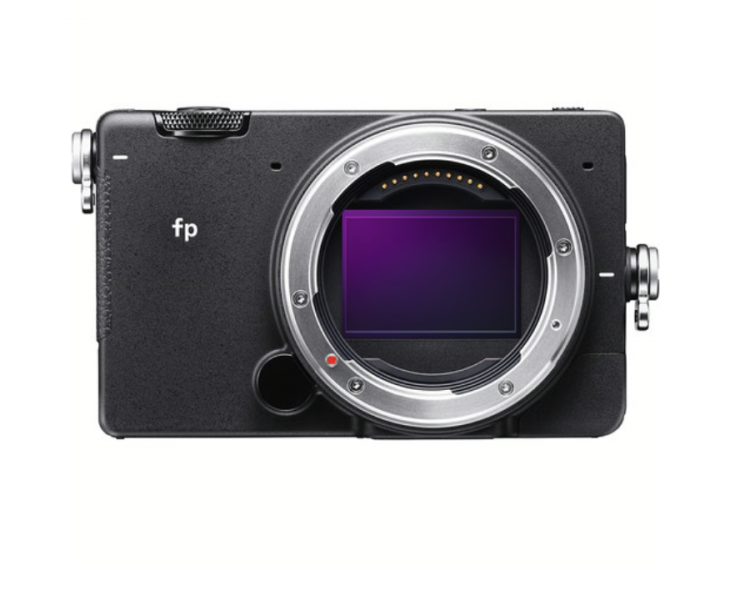
How does this price compare to the direct competition?
| PRICE | |
| Panasonic LUMIX S9 | $1,497.99 USD |
| Panasonic S5 II | $1,797.99 USD |
| Panasonic S5 | $1,197.99 USD |
| Nikon Z5 | $996.95 |
| Canon EOS R8 | $1,198 USD |
| Sony ZV-E1 | $1,898 USD |
| Sony a7C | $1,598 USD |
| Sigma fp | $1,899 USD |
The S9 is reasonably well-priced, but it probably needs to be around $300 USD less to move the needle for a lot of people. I say this because realistically Panasonic has to offer lower prices than their competition to help attract buyers back to their brand.
Competition in the hybrid mirrorless space is pretty intense with so many manufacturers offering good options.
Thoughts

The S9 looks to be very capable camera, with improved AF and good onboard and external recording options. Yes, the S9 is certainly being targeted at content creators, but it could be used by just about anyone given its feature set.
Panasonic always seem to be very late to the party and a lot of potential buyers are already firmly entrenched in systems from Sony and Canon.
I personally think that given the relatively small price difference between the S9 and S5 II, the S5 II would be the camera I would be choosing given its additional capabilities, EVF, better audio options, and longer continual recording times.
You have to also wonder why Panasonic didn’t make a more affordable M4/3 sensor camera with these features and price it under $1,000 USD. The S9 is almost a square peg trying to fit into a round hole.
If Sony or Canon had have released a camera like this it would probably be getting more fan fare, but Panasonic needs to move the needle further than these companies because they have a much smaller market share and a lot of previous users moved onto competing systems.
The biggest stumbling block Panasonic faces, as I just mentioned, is that they are late to the party. By only introducing cameras with decent AF at the start of 2023 they are only now starting to catch up to the competition. The trouble with buying any camera that utilizes a native mount is that once users are invested in a particular lens ecosystem it is very hard to get them to switch to another platform. For example, if you already own a ton of Sony E mount lenses, you are not going to suddenly sell all of those and your camera to buy an S9. This is why timing is everything. If you can lock a user into your lens mount system there is a good chance they will stay with you because switching is a very expensive proposition. Panasonic always made good cameras, but in the past, their limited lens lineup and the poor AF performance pushed potential buyers towards other systems, and now trying to win those people back may be a difficult task.
The other glaring issue as I have previously mentioned when talking about Panasonic, at least from my perspective, is that Panasonic’s cinema division seems to be dead and buried. They haven’t released a camera in a very long time and they seem to have abandoned the cinema space altogether. This is where Sony and Canon have a big advantage because users can step up from a mirrorless hybrid to a digital cinema camera, or use a mirrorless hybrid in combination with a digital cinema camera.
The S9 looks to be a solid camera and there is certainly a lot to like, but it faces stiff competition from other players in the market.

